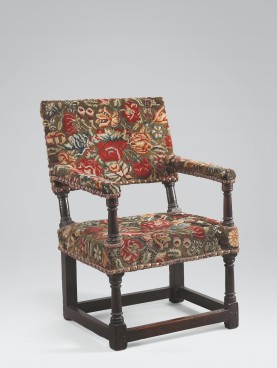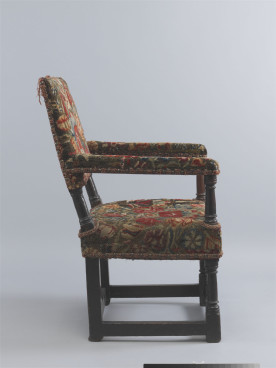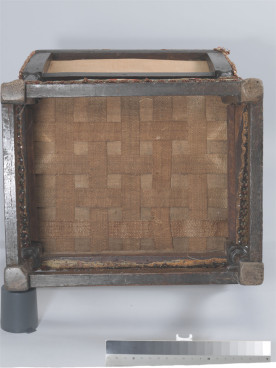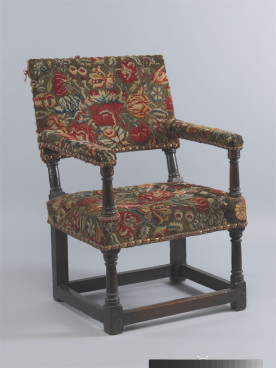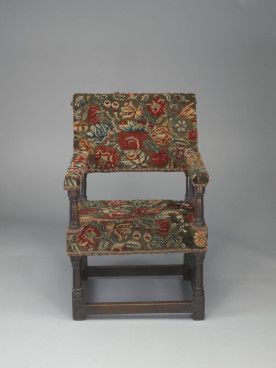Armchair, c.1650–75
Oak, now with 17th-century Turkey-work
Adam Bowett Catalogue 14/08/2012
Description
A joined oak armchair, c. 1650, the rectangular back, seat and arms covered with floral turkey work, the frame with tapered pillar back posts, arm supports and forelegs, on block feet with plain stretchers.
Dimensions
H: 37” (94cm) Seat height: 17 ¼” (44cm) W: 24” (61cm) D: 24” (61cm)
Designer / Maker
Unknown
Materials
Oak, turkey work, various upholstery materials
Dating Criteria
The landscape orientation of the back suggests an early date as do the plain pillar turnings of the uprights. The chair was originally two or three inches higher, again suggesting an early date (pre-1660), but see additional remarks.
Construction
All joints are mortise-and-tenon, single pegged except at seat level where all joints are double pegged.
Marks or stamps
None
Condition
Upholstery is not original; there is evidence of earlier nailing patterns in many parts, suggesting repeated coverings. Some pegs replaced but most in the lower part of the chair original. There are two oak battens nailed to the inside of the side rails whose function is unclear but they may once have supported a board to support collapsing upholstery. The present webbing and bottom cloth is old, conceivably seventeenth century and therefore conceivably original. There is a repair to the left rear seat rail joint with the back post where three cut nails have been hammered into the mortise to tighten the joint.
Additional remarks
There are remains of what appear to have been raked back heels which suggest that the chair was two or three inches higher. This would give a seat height of about 20-21 inches, which is often assumed to indicate a pre-660 date. However, raked heels are usually associated with fashionable post-Restoration chairs, typically after 1670. The dating evidence is therefore somewhat ambiguous.
Provenance
Purchased James Brett Antiques, March 2005

